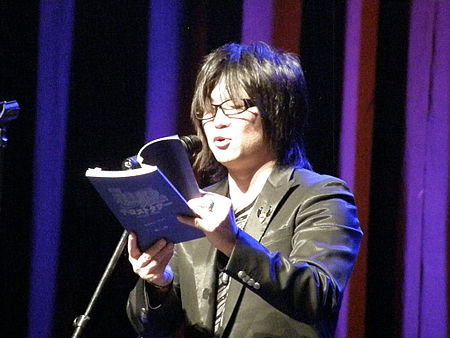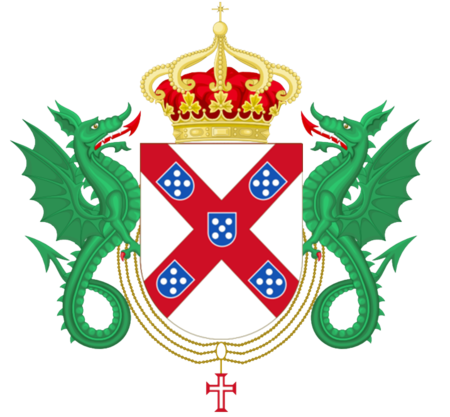Ishum
| |||||||||||||||||||
Read other articles:

Численность населения республики по данным Росстата составляет 4 003 016[1] чел. (2024). Татарстан занимает 8-е место по численности населения среди субъектов Российской Федерации[2]. Плотность населения — 59,00 чел./км² (2024). Городское население — 76,72[3] % (2022)…

Chain of mountains in the Andes of Ecuador Cotopaxi, Ecuador This article does not cite any sources. Please help improve this article by adding citations to reliable sources. Unsourced material may be challenged and removed.Find sources: Cordillera Real Ecuador – news · newspapers · books · scholar · JSTOR (January 2010) (Learn how and when to remove this message) The Cordillera Real (also Cordillera of Quito, Cordillera Central of Ecuador) is a chai…

Сельское поселение России (МО 2-го уровня)Новотитаровское сельское поселение Флаг[d] Герб 45°14′09″ с. ш. 38°58′16″ в. д.HGЯO Страна Россия Субъект РФ Краснодарский край Район Динской Включает 4 населённых пункта Адм. центр Новотитаровская Глава сельского посел…

森川智之配音演员本名同上原文名森川 智之(もりかわ としゆき)罗马拼音Morikawa Toshiyuki昵称モリモリ[1]、帝王[1]国籍 日本出生 (1967-01-26) 1967年1月26日(57歲) 日本東京都品川區[1](神奈川縣川崎市[2]、橫濱市[3]成長)职业配音員、旁白、歌手、藝人音乐类型J-POP出道作品外國人取向的日語教材代表作品但丁(Devil May Cry)D-boy(宇宙騎士�…

The Right HonourableChris HipkinsMPPotret resmi, 2022 Perdana Menteri Selandia Baru ke-41Masa jabatan25 Januari 2023 – 27 November 2023Penguasa monarkiCharles IIIGubernur JenderalCindy KiroWakilCarmel SepuloniPendahuluJacinda ArdernPenggantiChristopher LuxonKetua Partai Buruh ke-18PetahanaMulai menjabat 22 Januari 2023WakilKelvin DavisPendahuluJacinda ArdernPenggantiPetahanaMenteri Pelayanan Masyarakat ke-19PetahanaMulai menjabat 26 Oktober 2017Perdana MenteriJacinda ArdernPen…

Pemilihan umum Bupati Aceh Besar 20172012202415 Februari 2017Kandidat Calon Mawardi Ali Saifuddin Yahya Partai PAN Partai Aceh Suara rakyat 110.116 82.814 Persentase 57,08% 42,92% Bupati petahanaMukhlis Basyah Partai Aceh Bupati terpilih Mawardi Ali PAN Pemilihan umum Bupati Aceh Besar 2017 adalah pemilihan kepala daerah yang diselenggarakan pada tanggal 17 Februari 2017 untuk memilih Bupati Aceh Besar periode 2017-2022. Pilkada ini diikuti oleh dua pasang calon. Pasangan pertama Maw…

Wangsa Paling Tenang BraganzaSereníssima Casa de BragançaWangsa indukWangsa Portugis Burgundy melalui garis Wangsa AvizNegara Kerajaan Portugal Kekaisaran BrasilKelompok etnisPortugis, BrasilDidirikan1442PendiriAfonso I, Adipati BraganzaKepala saat iniDuarte Pio, Adipati BraganzaPenguasa terakhirKerajaan Bersatu Portugal, Brasil dan Algarves: João VI (1822) Kerajaan Portugal: Manuel II (1910) Kekaisaran Brasil: Pedro II (1889)Gelar Kaisar Brasil Raja Kerajaan Bersatu Portugal, Brasil dan Alga…

Lentopallon Mestaruusliiga 2015-2016 Competizione Lentopallon Mestaruusliiga Sport Pallavolo Edizione LX Organizzatore SL Date dal 26 settembre 2015al 19 aprile 2016 Luogo Finlandia Partecipanti 11 Risultati Vincitore Kokkolan Tiikerit(3º titolo) Secondo Vammalan Terzo Hurrikaani-Loimaa Statistiche Miglior marcatore Michael Chemos (615)[1] Incontri disputati 192 Cronologia della competizione 2014-15 2016-17 Manuale La Lentopallon Mestaruusliiga …

American autoharp player Bryan Bowers is an American autoharp player who is frequently credited with introducing the instrument to new generations of musicians.[1] Career Bowers is known for performing on the autoharp. Bowers became very popular with the audience of the comedy radio program The Dr. Demento Show with his 1980 recording of Mike Cross's song The Scotsman.[2] In 1993, Bowers was inducted into the Autoharp Hall of Fame whose membership includes Mother Maybelle Carter,…

乔冠华 中华人民共和国外交部部长 中国人民对外友好协会顾问 任期1974年11月—1976年12月总理周恩来 → 华国锋前任姬鹏飞继任黄华 个人资料性别男出生(1913-03-28)1913年3月28日 中華民國江蘇省盐城县逝世1983年9月22日(1983歲—09—22)(70歲) 中华人民共和国北京市籍贯江蘇鹽城国籍 中华人民共和国政党 中国共产党配偶明仁(1940年病逝) 龚澎(1970年病逝) 章含之�…

Liturgical book For other uses, see Missal (disambiguation). The Missal, a 1902 portrait by John William Waterhouse A missal is a liturgical book containing instructions and texts necessary for the celebration of Mass throughout the liturgical year. Versions differ across liturgical tradition, period, and purpose, with some missals intended to enable a priest to celebrate Mass publicly and others for private and lay use. The texts of the most common Eucharistic liturgy in the world, the Catholic…

American politician and attorney Aisha BraveboyBraveboy in 2007Prince George's County State's AttorneyIncumbentAssumed office January 7, 2019Interim: December 3, 2018 – January 7, 2019Preceded byAngela AlsobrooksMember of the Maryland House of Delegatesfrom the 25th districtIn officeJanuary 10, 2007 – January 14, 2015Preceded byAnthony BrownSucceeded byAngela AngelDarryl Barnes Personal detailsBorn (1974-07-29) July 29, 1974 (age 49)Washington, D.C., U.S.Politic…

Dominican basketball player (born 1986) In this Spanish name, the first or paternal surname is Horford and the second or maternal family name is Reynoso. Al HorfordHorford with the Boston Celtics in 2021No. 42 – Boston CelticsPositionPower forward / centerLeagueNBAPersonal informationBorn (1986-06-03) June 3, 1986 (age 38)Puerto Plata, Dominican RepublicListed height6 ft 9 in (2.06 m)Listed weight240 lb (109 kg)Career informationHigh schoolGrand Le…

Space program of SUPARCO, Pakistan The Space Programme 2040[1][2] is a satellite development and launch programme of the Space and Upper Atmosphere Research Commission (Suparco), Pakistan's space research authority.[3] The Space programme 2040 intends to replace the Badr satellite programme and geo-stationary communication satellite.[3] On 11 August 2011, Paksat-IR was launched from Xichang Satellite Launch Center by China, making it first satellite to be launched…

Questa voce o sezione sull'argomento Religione è ritenuta da controllare. Motivo: Nella voce sono presenti alcune WP:RO e parti WP:POV di un utente per pubblicizzare il proprio libro Partecipa alla discussione e/o correggi la voce. Segui i suggerimenti del progetto di riferimento. I fratelli di Gesù sono menzionati in alcuni brani del Nuovo Testamento e in alcuni scritti di autori cristiani successivi. Nel Vangelo secondo Marco (6,3[1]) e in quello di Matteo (13,55[2]) ven…

Association football governing body of Indonesia Football Association of IndonesiaAFCFull namePersatuan Sepak Bola Seluruh IndonesiaShort namePSSIFounded19 April 1930; 94 years ago (1930-04-19)HeadquartersGBK Arena, JakartaFIFA affiliation1952; 72 years ago (1952)AFC affiliation1954; 70 years ago (1954)AFF affiliation1984; 40 years ago (1984)ChairmanErick ThohirVice-PresidentZainudin AmaliRatu Tisha DestriaGeneral SecretaryY…

القديسغريغوريوس المستنير (بالأرمنية: Գրիգոր Լուսավորիչ) لوحة فسيفسائية للقديس غريغوريوس في كنيسة باماكاريستوس (جامع الفاتحية حاليًا)، إسطنبول معلومات شخصية الميلاد سنة 252 أرمينيا تاريخ الوفاة سنة 329 (76–77 سنة)[1] [2] تولى المنصب302 الحياة العملي…

Alberto Montt Montt Diputado de la Repúblicapor Temuco y Imperial 1891-1894 Diputado de la Repúblicapor Talca 1888-1891 Información personalNacimiento 1860 Santiago, ChileFallecimiento 1927 Valparaíso, ChileNacionalidad ChilenaFamiliaPadres Manuel Montt Rosario Montt Goyenechea Cónyuge Rosa Montt PérezEducaciónEducado en Universidad de ChileInformación profesionalOcupación AbogadoPartido político Partido Liberal[editar datos en Wikidata] Alberto Montt Montt[1] (Santiag…

Veterinary school in France École Nationale Vétérinaire d'AlfortTypePublic veterinary schoolEstablished1765PrincipalChristophe DegueurceStudents800LocationMaisons-Alfort, Ile-de-France, FranceAffiliationsParis-Est Créteil Val-de-Marne UniversityWebsitewww.vet-alfort.fr The entrance gate The National veterinary school of Alfort (French: École nationale vétérinaire d'Alfort or ENVA) is a French public institution of scientific research and higher education in veterinary medicine, located in…

Władysław Reymont. Władysław Stanisław Reymont, terlahir sebagai Stanisław Władysław Rejment (7 Mei 1867 - 5 Desember 1925), ialah penulis Polandia yang terkenal yang memenangkan Hadiah Nobel Sastra pada 1924 untuk novel epik 4 jilidnya Chłopi (Sang Petani). Novel ini berkisah tentang kehidupan bagian masyarakat ini. Ia juga menulis Ziemia obiecana (Tanah yang Dijanjikan), mengenai kapitalisme industri Łódź pada abad ke-19. Beberapa orang berkata bahwa ia adalah penulis Polandia yang…